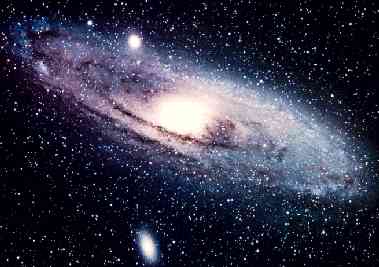A tiny galaxy with a very dim light has been discovered near the neighboring galaxy Andromeda, and this may affect the understanding of the mystery of dark matter
Galileo

Direct link to this page: https://www.hayadan.org.il/andromedaafel.html
Andromeda is a galaxy located at a distance of about two million light years from the Milky Way, and has several satellite galaxies. The discovered galaxy, Andromeda IX, is extremely small (about 3000 light-years in diameter, compared to about 250,000 light-years in Andromeda itself) and emits very little light. In fact it was detected using individual stars that are bright enough to observe.
The galaxy was discovered by scientists from the Sloan Digital Sky Survey as part of a sky mapping process. The discovery was presented at the end of May at the meeting of the American Astronomical Society in Denver. This discovery may be important for understanding dark matter. In the universe, apart from the visible matter, there is also a decent amount of dark matter, as well as dark energy.
Dark matter - this is the name given to a substance that an accepted theory for explaining the behavior of galaxies points to its existence: the galaxies rotate as if there is more matter in them than can be seen, and the distribution of the invisible matter in space is different from that of the visible matter. Dark matter exerts a gravitational force, but has not yet been detected in other ways. Dark energy is different and not directly related to our matter: it causes the universe to expand at an accelerated rate.
According to theories dealing with dark matter and its connection to the formation of galaxies, there are supposed to be a kind of "galaxy seeds" made of dark matter that remained after the formation of the large galaxies, "seeds" that float around space. These have not been observed so far, and there is a fundamental problem to observe them since by definition this is "dark" matter. It is possible that Andromeda IX is such a seed, to which a small amount of visible matter was attached and thus revealed to our eyes. There is currently no way to confirm this assumption, but it is interesting and will certainly lead to the search for more pale galaxies in our vicinity.
Astrophysics connoisseur - the universe
Knowledge of astrophysics - stars and galaxies
https://www.hayadan.org.il/BuildaGate4/general2/data_card.php?Cat=~~~930950976~~~97&SiteName=hayadan
